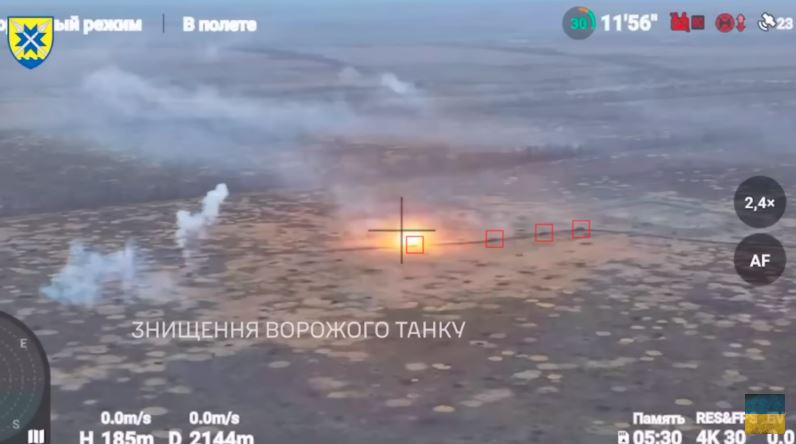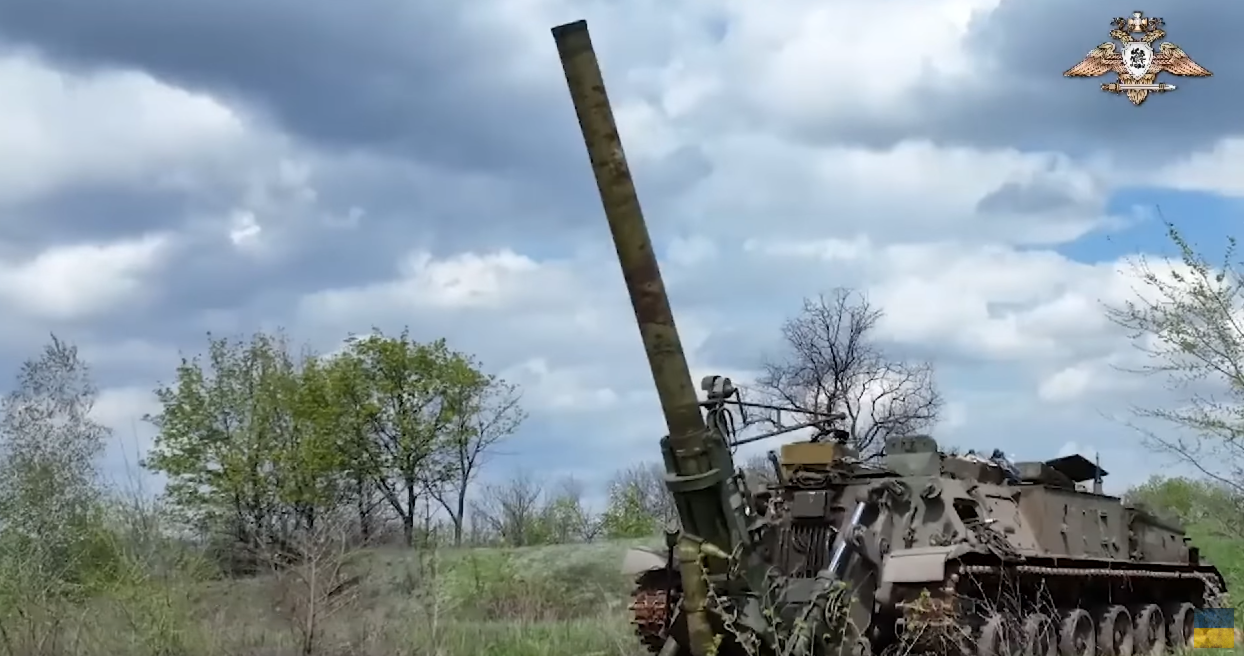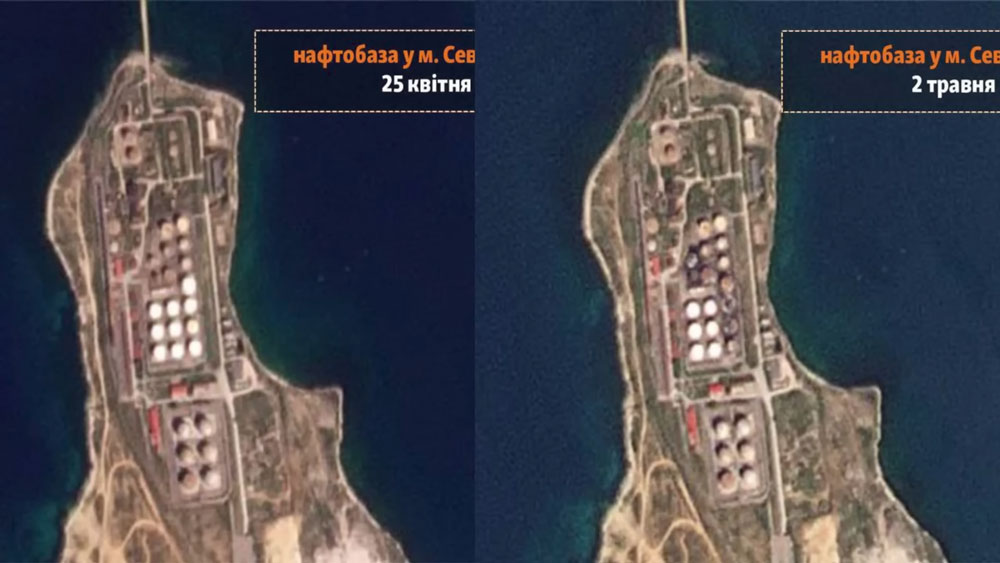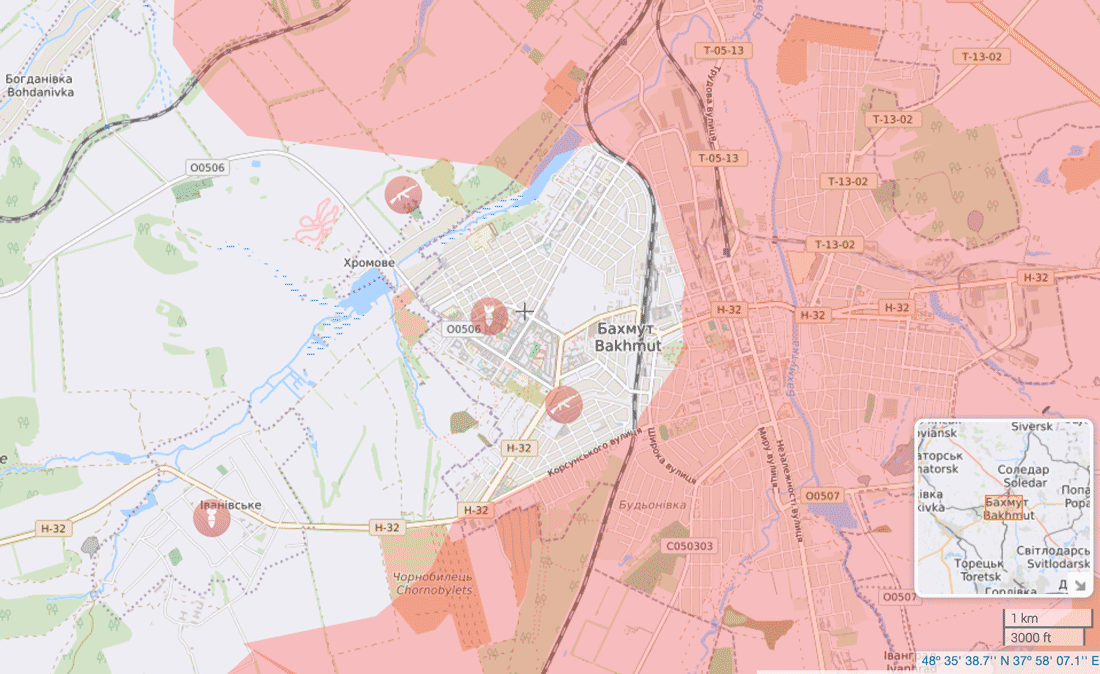Day 428: Today there are a lot of updates from the Donetsk Oblast. Here, Ukrainian forces learned from their mistakes and adapted to the new Russian approach.
Shortly, Russian forces conducted a bigger attack in an attempt to develop their recent success; however, they entered a prepared kill zone which resulted in the complete annihilation of their assault unit. Last time, I told you that due to the problems with logistics, Russian forces decreased the intensity of their attacks in the direction of Tonenke and switched their focus to Nevelske. I also told you that Russians applied a new tactic where one assault unit was sacrificed to draw the attention of the main Ukrainian firepower, while another assault unit attacked the main target.
The freshest report suggests that Russians tried to develop their success further and launched much bigger attacks. If previously Russians used two tanks, then for this attack, Russians allocated one tank and three armored fighting vehicles.
Ukrainians identified that the main goal of this mission was to capture a trench network in the treeline in front of Nevelske and reserved their firepower. The moment the Russian column started approaching the target, Ukrainian ATGM crews immediately destroyed the Russian tank. Several seconds later, the first armored fighting vehicle was destroyed as well and the column was stopped.
Immobilized Russians tried to engage and suppress Ukrainian firing points. However, it was unsuccessful and Russians lost the third machine. The last remaining one decided to proceed with the storming nonetheless, managed to cut the distance with the trench and started storming it. Unfortunately for Russians, Ukrainian artillery responded very timely and destroyed the vehicle, while the fighters from the 56th brigade dealt with the enemy infantry. The remaining four soldiers tried to hide under the remnants of the vehicle, but were finished by the drone operators. As a result, the whole reinforced assault unit was completely eliminated.
In the northern part of the region, Ukrainians conducted a successful counter-attack. As you remember, previously, Russian forces reached the embankment and started rapidly expanding their control along the road. Russians established their main positions in the ruins of the bridge, established control over a trench network north of the bridge, and even started digging in and establishing firing points on the embankment itself.
Ukrainian Marines from the 36th brigade conducted a series of raids on Russian positions, sometimes with tanks, and identified a weak spot. It turned out that Russians focused on fortifying the embankment but left the flanks vulnerable, assuming that an attack from the north is unlikely.
Recent combat footage revealed that Ukrainians prevented Russians from conducting a rotation process with an artillery strike, ensuring that the troops, exhausted from the constant digging, remained in their positions. Next, they caught Russians by surprise with a sudden attack from the north and cleared all positions north of the small hill, including the trench network and, highly likely, even the bridge. By moving the contact line towards the natural obstacle, Ukrainians undermined Russian plans of using this bridgehead for an attack on Novokalynove.
Avdiivka is the most challenging direction for Russians, and according to the former head of the DNR militia, the Russian rate of survival here is even lower than in Bakhmut. After significantly degrading their assault units, Russians were forced to modify their approach to continue moving forward. As expected, the new tactic became wiping out the areas of difficulty, particularly with air bombs.
The spokesman for the Ukrainian Air Force reported that there are cases of the use of 1,500-kilogram bombs. Last year, Ukrainians managed to curtail Russian use of aviation by destroying Russian airfields, with the most notorious case being the destruction of around 20 fighter jets in Crimea by sabotage. This forced Russians to move their jets away from Ukraine. Ukrainian intelligence is working on new options.
In the meantime, as Russians started using aviation more frequently, the number of accidents involving malfunctions and pilot errors immediately skyrocketed. Recently, a Russian fighter-bomber accidentally dropped two FAB-500 bombs on Belgorod. The first bomb landed on the road, and the explosion threw one car on the roof of a house and left casualties among civilians. The second bomb hit a residential building but failed to explode due to malfunction. Belgorod authorities evacuated 30,000 civilians from the city, while separatists extracted and later detonated the bomb.
Another accident happened in the Murmansk Oblast. Here, a Russian fighter jet malfunctioned midair, and the pilots ejected themselves from the aircraft while the jet fell into the lake. Malfunctions and detonations are perfect concealments of sabotage, and even though these cases do not seem suspicious, any large-scale incidents may indicate the effective work of Ukrainian intelligence and spies.





